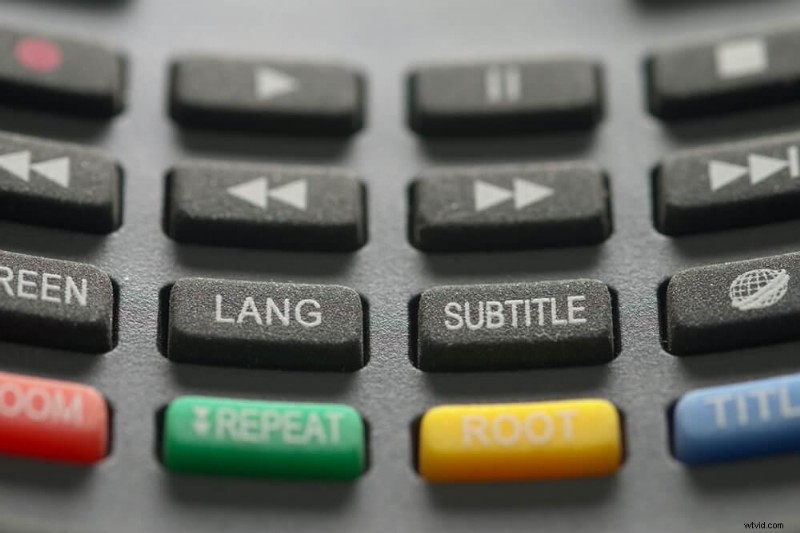La última serie exitosa de Netflix, Squid Game, ha demostrado ser un tesoro instantáneo de entretenimiento para sus espectadores. El programa presenta a 456 jugadores económicamente desesperados que compiten por el premio en metálico valorado en 45 000 millones de dólares, pero esos juegos rápidamente se vuelven mortales cuando luchan entre sí y contra otros contendientes como ellos.
El drama lleno de acción sigue a algunos personajes en su búsqueda a través de estos combates que desafían a la muerte mientras intentan desesperadamente no ser derrotados por nadie más o arriesgarse a ser eliminados antes de alcanzar el carril de la victoria con todo este botín en juego.
Con una trama que mezcla la sátira y el melodrama, Squid Game también es posiblemente uno de los programas más innovadores, originales y anticipados de Netflix. Esta cautivadora historia sobre los extremos a los que llega la gente por dinero se basa en varios juegos.
Los seis juegos jugados por los concursantes se basan en juegos de niños coreanos que muchas personas ya conocen, como tira y afloja y luz roja/luz verde. El último juego se llama “juego del calamar”.
The-Plot-Squid-Game">The-Plot:Squid Game

450 personas endeudadas arriesgan su vida para ganar dinero. ¡Cada juego tiene un resultado diferente, y si pierdes incluso un juego, les costará la vida!
El programa destaca la división de clases de Corea del Sur con ocho personajes principales que desempeñan papeles importantes a lo largo de las seis rondas:desde un jefe de pandilla hasta un hombre de negocios que alguna vez fue exitoso y ahora es buscado por la ley por robar a sus clientes, desde un trabajador de una fábrica migrante que se arriesga a ganar millones en estos juegos mortales a un desertor norcoreano y más.
El programa ha recibido elogios de la crítica por su emocionante trama, excelente diálogo y fascinante historia. Pero la única queja de algunos espectadores es sobre los subtítulos deficientes del programa. La exitosa serie ha sido objeto de críticas por "graves errores de traducción" en los subtítulos. Un experto en idiomas advirtió que el significado real de los eventos representados en este exitoso programa podría perderse, entre otras cosas, porque el texto en pantalla es inexacto.
Al igual que con todas las traducciones, a veces es necesario adaptar los significados y algunos detalles se pierden en la traducción porque los idiomas no se pueden traducir directamente. Sin embargo, los subtítulos a menudo carecen de información vital o tienen graves errores de traducción debido a:
- Espacio limitado (el programa de televisión tiene poco espacio en la pantalla)
- Complejidad entre las palabras y la estructura de las oraciones; las oraciones difíciles generan textos más largos que se traducen mal en pantallas pequeñas sin funciones de resaltado.
Errores de subtitulado
Los errores de subtítulos en películas y programas de televisión son tan comunes que casi se espera que sean parte de la experiencia de visualización. Sin embargo, lo que la mayoría de los espectadores no se dan cuenta es que estos errores a menudo van más allá de las palabras mal escritas y la mala gramática; muchas veces, los subtítulos incluyen contenido que no estaba destinado a audiencias extranjeras.

Hasta cierto punto, es comprensible por qué sucede esto. Los distribuidores extranjeros a menudo contratan mano de obra barata en países en desarrollo para ahorrar dinero en costos de subtitulado. Si a un trabajador mal pagado se le asigna la tarea de traducir y subtitular una película de dos horas, es comprensible que encuentre formas de ser lo más eficiente posible con tiempo y esfuerzo. Y si le pagan centavos por hora, ¿discutirá con su empleador sobre la gramática correcta?
Sin embargo, no hace falta investigar mucho en línea antes de que los fanáticos que saben idiomas extranjeros se encuentren con algunos errores bastante interesantes que van más allá de las letras faltantes. De vez en cuando, escuchamos sobre fanáticos que prefieren los subtítulos al doblaje, ya que sienten que es más preciso.
Esta creencia probablemente proviene de la práctica común de eliminar contenido o diálogo que puede ser ofensivo para los países extranjeros donde se distribuirá el material, así como corregir errores menores de gramática y ortografía que resultan de limitaciones de tiempo en la producción de subtítulos. Pero algunos no se justifican tan fácilmente...
¿Por qué son tan comunes los errores de subtítulos?
No sabemos exactamente cuántos errores de subtítulos se crean cada año, pero la cifra probablemente supere las decenas de millones. Gran parte del contenido subtitulado se origina en varios países, por lo que no sorprende que los idiomas involucrados a menudo sean inglés y otros idiomas.
Esto significa que hay muchas más oportunidades de errores que si todo estuviera en un solo idioma. Por ejemplo, los productores de películas franceses tienen acceso al soporte audiovisual galo en lugar de recurrir a amigos estadounidenses o canadienses para obtener ayuda con los subtítulos, una ventaja que no se aplica a sus homólogos indios que deben recurrir a hablantes nativos fuera de la India para obtener ayuda con los subtítulos en inglés.
El hecho de que a los hablantes no nativos se les pague menos que a los profesionales haría que los problemas fueran más probables. Además, cuanto menos familiar sea un idioma, mayor será el riesgo de errores.
Traducciones Literales
Los hablantes no nativos a veces aplican una traducción demasiado literal de su propio idioma al inglés. This can lead to odd sentences that may convey the meaning, but not the style or rhythm of the original.
In some cases, it could be argued that nothing is lost - apart from a few superfluous words which could have been better used elsewhere. However, in most instances an overly literal approach results in “noise” – stuff that’s surplus to requirements and should have been cut out.
Punning Subtitles
A subtitler has a limited space through which to express themselves so puns are likely to pose problems.
Subtitles often try to convey the same feeling as the original dialogue, but puns rarely translate well. As a result, it’s common for subtitles to lose their “punch”. In addition, the subtitler has to pick from a handful of possible substitutions that can sometimes make little sense.
Lack of Training
Subtitling is an art and a craft which takes time to learn. Even native speakers need years of experience before they can turn out error-free subtitles.
It’s not surprising, therefore, that non-natives are going to take even longer - especially if they receive little or no training prior to employment. In fact, many will probably never become competent subtitlers despite being immersed in their source language for years on end!
Tight Deadlines

The high demand for subtitles means most providers aren’t about to ask their staff to submit work late even if there are problems with quality control. So, deadlines are usually tight leading to an ever-increasing risk of mistakes creeping into the final product.
There are many reasons why subtitles go wrong but these are probably the main ones… which hopefully helps explain why there’s so much incorrect subtitling out there!
Poor Timing
There are various timing methods for adjusting subtitles to fit the dialogue. These include:
- Lead In/Lead Out
- Preferred Timing (PTS)
- Adopted Timing (AT)
- Center Cut
They all work well, but usually it’s necessary to re-time one or more lines because of errors or fluctuations in the source. This changes the length of time that the subtitle appears onscreen - often resulting in a mismatch with what’s being said. It’s not surprising therefore that this is another common mistake!
Subtitles also have to deal with overlapping speech which can be difficult if there are problems aligning subtitles with their corresponding audio track. The only solution is to delay showing subtitles until after they’ve spoken - which again can result in timing errors.
Sticking to Exact Phrasing
Some subtitle formats allow the creator to use exact English phrases verbatim . This is intended only for places where the dialogue is being quoted or sung - but some subtitlers see it as an opportunity to ignore correct translation principles by sticking to their own language style.
They figure that if they’re close enough, viewers will understand what’s being said even though it may be incorrect. It might not affect everyone, but for those it does impact, it can lead to major misunderstandings!
The solution of course is for providers to specify that the English should follow the time codes rather than just repeat everything word-for-word.
Subtitler Poor Spelling and Grammar
It’s widely accepted that good spelling and grammar are vital if subtitles are to be understood. Unfortunately, there are subtitler who believe it’s OK to ignore them - especially when typing at speed.
So, this is yet another common mistake that risks “rubbing off” on others who read the translations of their work! Subtitles must not only look right but also sound right which means correct punctuation is also important.
Think about what you’re writing and check for mistakes - then sleep on it before making final edits because you could always miss something!
Chewing the Scenery
Some subtitlers want to make a big impression by using different styles of translation depending upon whether they’re dealing with serious or humorous material.
They want viewers to see that they’re clever, inventive and dynamic. It’s interesting to note that nobody even notices when native speakers make mistakes in their speech - but subtitles are under the microscope all the time so everyone sees them!
As a result, if you want to be taken seriously as a subtitler, it’s much better to stick with one style of translation especially when working with serious material because audiences will assume minor inaccuracies are due to transcription errors rather than your lack of skill!
Dubbing vs. Subtitles
It used to be assumed that viewers would always prefer dubbed versions over subtitles for foreign language content. However, audience demographics have changed considerably since then making it far easier for providers to get away with subtitling almost anything and still make money.
This has brought subtitling to the forefront and audiences now expect it for all foreign language content. Unfortunately, some providers still think they can get away with dubbing for anything considered “high-brow” - such as documentaries, art house movies or educational programs about science or history.
Clearly this is not the case as people want correct translations that they can read at their own speed without having to listen carefully too. Sadly, they’re likely to switch off pretty quickly if you don’t provide them with what they want so play safe and subtitle your material properly!
What’s the Difference Between Closed Captions and Subtitles?
While both subtitles and closed captions are displayed text that transcribe video to text, translate or otherwise convey the audio portion of television programs, movies and video games to individuals who cannot hear them, there are important differences between the two.
Closed captioning may also include sound effects or other sounds in order to better convey important information about ambient noises - a feature often missing from subtitles.
Subtitles translate video dialogues and on-screen text into a language that the viewer understands, while closed captioning describes sounds and sound effects as they occur, which makes them particularly useful for individuals who are deaf or hard of hearing.
The benefits of closed captioning are for people who are deaf or hard of hearing, while subtitles are intended to assist people who speak a language other than the one spoken in the video.
SubtitleBee Offers Accurate Subtitles and Captions for All Your Projects
At SubtitleBee, we are passionate about providing high-quality subtitles for users of all types. Whether it’s educational material, film or television content, we offer subtitles and translations in 100+ languages.
In today’s world of on-demand, streaming services and YouTube videos it is more important than ever to have high quality subtitles. In particular foreign languages can tremendously expand an audience base as well boost search rankings in countries where they aren’t available - which will increase discoverability for viewers across the globe!
Our easy-to use subtitling and audio transcription service guarantees high quality translations at an affordable rate, saving you time. We have subtitles in over 100 languages that will get your message across no matter what the occasion.
For more information, feel free to contact us today!
